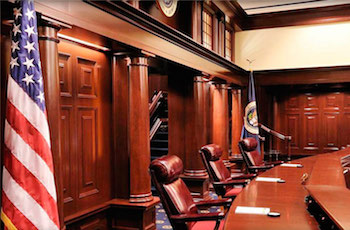Federal Circuit Limits Claims to the Described Invention and Finds That Certain Targeted Advertising Claims Were Unpatentable | Pillsbury Winthrop Shaw Pittman LLP
TAKEAWAYS
- The precedential opinion reaffirmed that when a patentee consistently describes its present invention, its claims will be limited to such invention unless it meets a narrow exception.
- The decision reaffirmed that targeted advertising can be an abstract idea.
On March 5, 2024, in Chewy, Inc. v. International Business Machines Corp., the Federal Circuit issued a precedential opinion reaffirming that when a patentee describes its invention, its claims will be limited to such invention unless it meets a narrow exception. It also reaffirmed that targeted advertising can be an abstract idea.
Federal Circuit Holds that the Claims Can Be Limited to the Described Invention
First, the Federal Circuit (the “Court”), addressed the district court’s order granting summary judgment on non-infringement with respect to claims 1, 2, 14, and 18 of U.S. Patent No. 7,072,849. The claim element at issue recited “selectively storing advertising objects at a store established at the reception system.” The lower court construed this to mean “retrieving advertising objects and storing at a store established at the reception system in anticipation of display concurrently with the applications,” requiring that the advertising objects be “pre-fetched.” The patentee argued that the construction should not require pre-fetching, but the lower court disagreed. The Federal Circuit, reviewing the claim construction de novo, affirmed. The Court noted that “[c]laim terms are generally given their plain and ordinary meaning, which is the meaning one of ordinary skill in the art would ascribe to a term when read in the context of the claim, specification, and prosecution history.” It reviewed the written description, stating that the summary of the invention, as well as the written description, described the “present invention” in a manner such that a skilled person in the art “would understand the claimed invention requires pre-fetching of advertising objects.”
The patentee argued that these descriptions did not limit the scope of the entire invention, relying on Absolute Software, Inc. v. Stealth Signal, Inc., 659 F.3d 1121 (Fed. Cir. 2011). The Court disagreed, stating that the narrow exception in Absolute applies only when references to “a certain limitation as being the ‘invention’ are not uniform, or where other portions of the intrinsic evidence do not support applying the limitation to the entire patent.” But in this case, the underlying patent “uniformly refers to the pre-fetching of advertising objects as an aspect of the invention as a whole.” The Court further noted that even though the patent may not have required objects generally to be pre-fetched, it required pre-fetching for the subclass of advertising objects every time.
The Court also rejected the argument that because claims 9, 10, 22, and 22 used the term “pre-fetching,” those were the only claims to require that limitation. It noted that the patentee can use different claim terms to define the invention, stating that the claims at issue “capture the concept of pre-fetching of advertising objects by reciting ‘selectively storing advertising objects,’ while dependent claims 9, 10, 22, and 23 capture this concept by reciting ‘pre-fetching.’”
The Federal Circuit Applies Alice
The Court also affirmed the lower court’s finding that several claims were invalid under 35 U.S.C. § 101. The Court applied the two-step Alice framework. Step one requires the Court to “determine whether the claims are ‘directed to a patent-ineligible concept,’ such as an abstract idea.” If so, then the Court moves on to step two, which will “examine the elements of the claim to determine whether it contains an ‘inventive concept’ sufficient to ‘transform’ the claimed abstract idea into a patent-eligible application.”
Historically, the Court has held that “claims to targeted advertising were directed to an abstract idea at Alice step one.” This case was no different, and the Court found that “[c]orrelating advertisements with search results is a type of targeted advertising and is thus abstract.”
IBM argued that the claims are directed to technical problems unique to “advertising over a computer network,” and that using search results rather than search queries “improves the specificity and relevancy of online advertisements.” Even accepting the argument that the invention improved the specificity and relevancy of online advertisements, the Court nevertheless found that it was “at most an improvement to the abstract concept of targeted advertising wherein a computer is merely used as a tool.”
The Court took the time to distinguish IBM’s claims from the patent eligible claims in Packet Intelligence LLC v. NetScout Systems, Inc., 965 F.3d 1299 (Fed. Cir. 2020). In doing so, the Court rejected IBM’s argument that the claims were directed to problems “unique to computer networks, or specific improvements to the functionality of the computer itself,” like the claims in Packet Intelligence.
The court also concluded that the claim elements did not “constitute an inventive concept sufficient to transform the claimed abstract idea of identifying advertisements based on search results into patent-eligible subject matter” because: (1) “use of a conventional repository for storing advertisements and associated search results in a well-known”; (2) improving speed “or efficiency inherent with applying the abstract idea on a computer [does not] provide a sufficient inventive concept”; (3) “using a user session identifier to implement the abstract idea of correlating advertisements with search results, which is not an inventive concept”; and (4) the claims did “not recite any specific implementation of the abstract concept of using search results to identify relevant advertisements.”
Conclusion
The Federal Circuit’s decision provides a useful data point in the Court’s application of Alice, finding the claims were an improvement to an abstract concept rather than specific computer processes. It is also a reminder to patent drafters and litigators that describing a limitation as the invention can, absent certain exceptions, narrow the scope of the claims to just that limitation.
[View source.]






